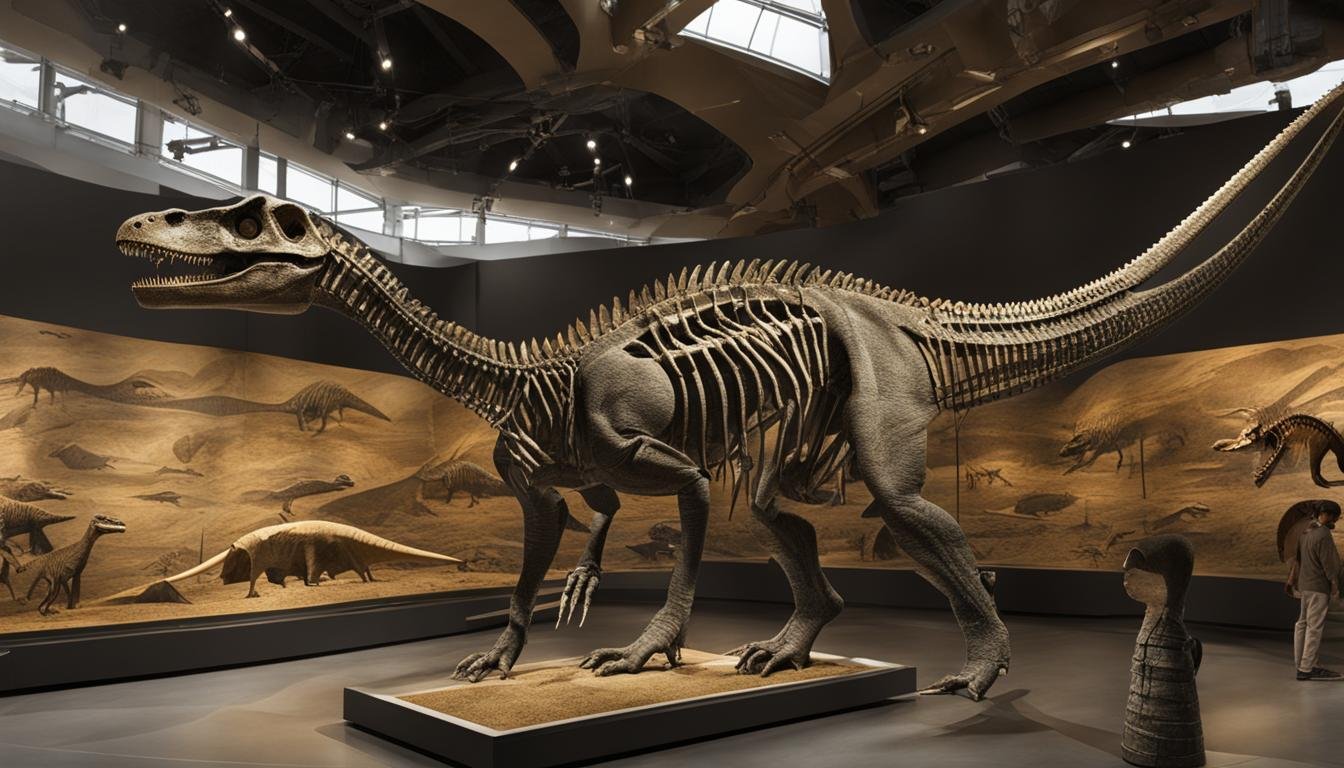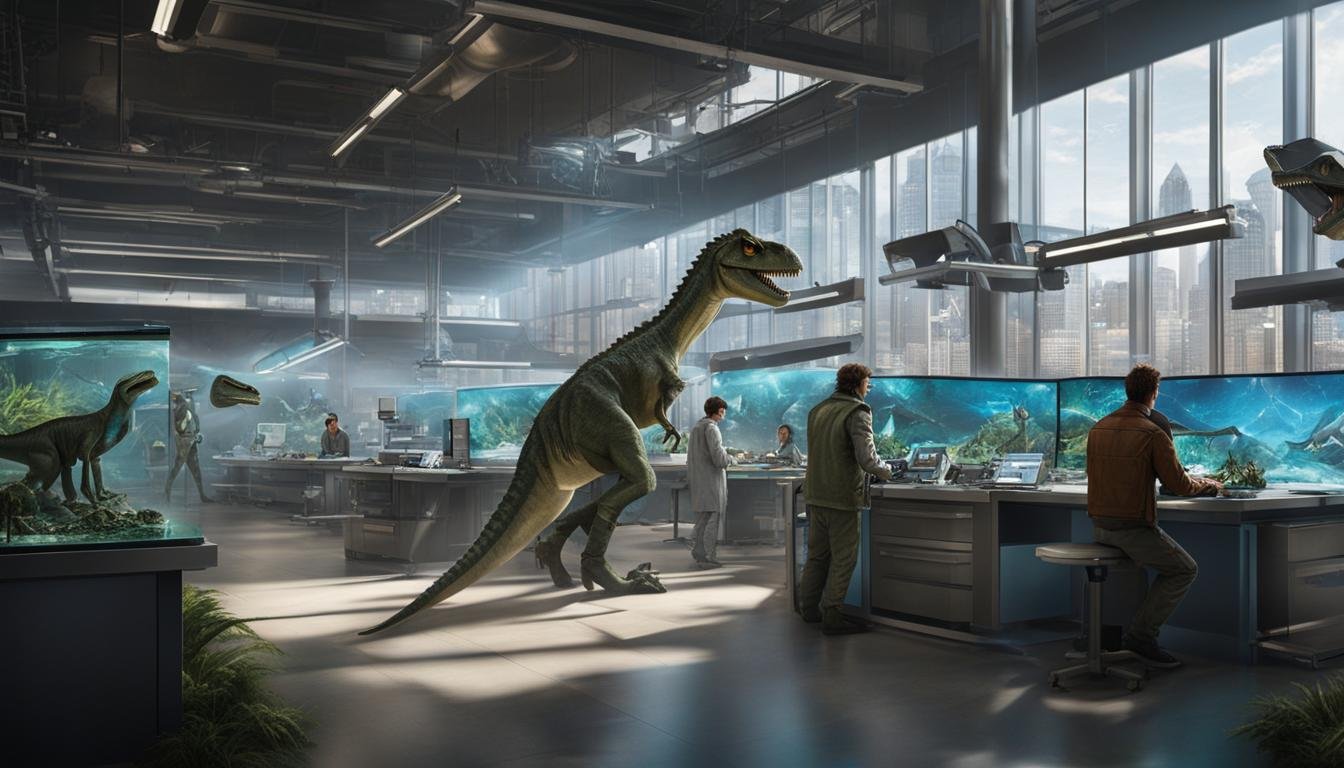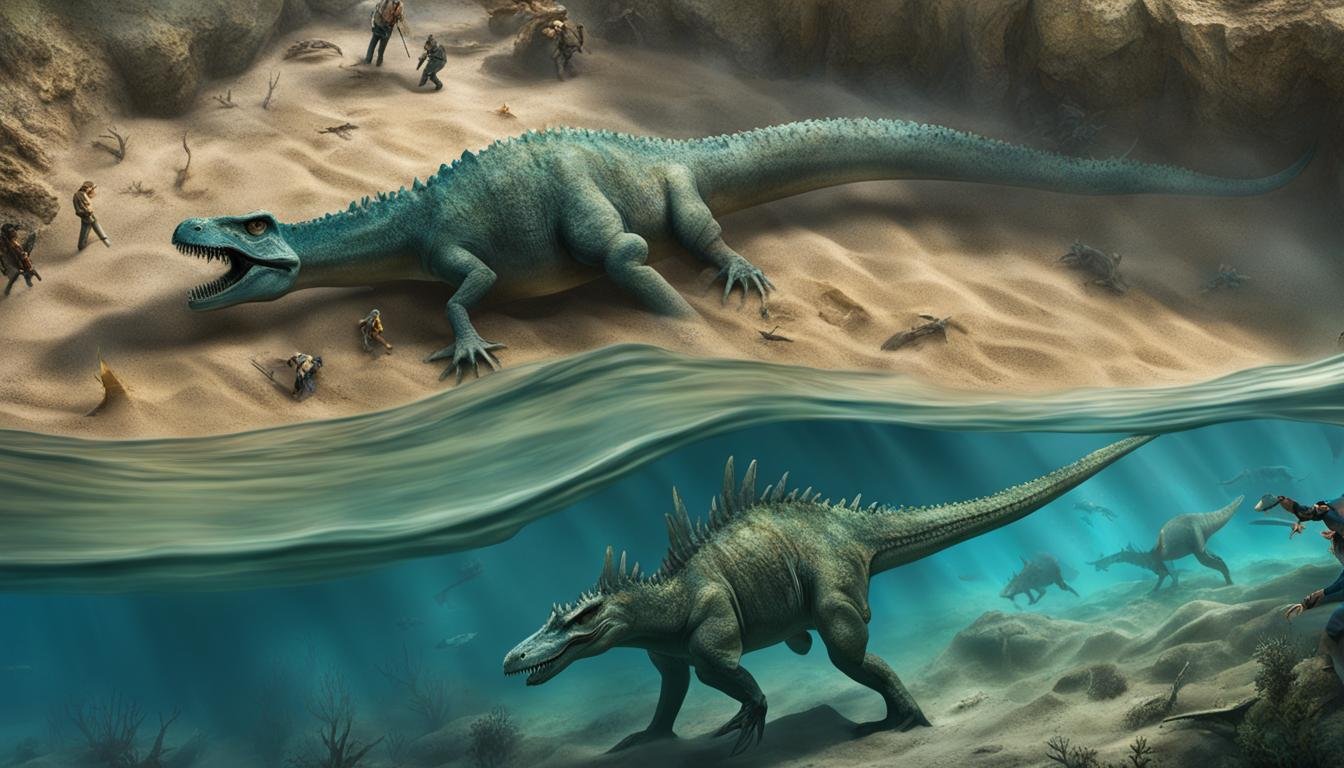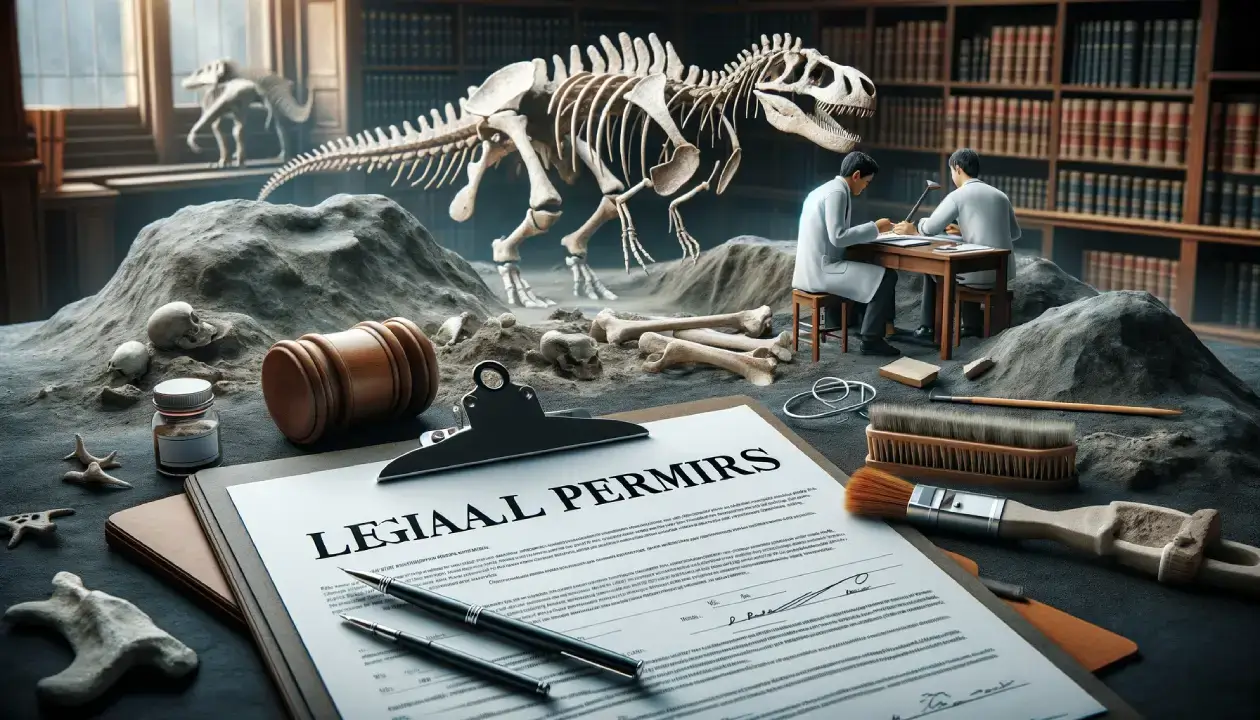Welcome to a journey back in time, where the Earth’s ancient history is etched in stone and bone! Imagine walking on the same ground where dinosaurs once roamed, uncovering secrets millions of years old. That’s the thrilling world of paleontological dig sites, where the past is unearthed, and every discovery tells a story. Whether you’re a budding paleontologist, a dinosaur enthusiast, or simply curious about prehistoric life, this guide will take you around the globe to explore the most fascinating fossil sites. From the windswept plains of Wyoming to the remote deserts of Mongolia, join us as we delve into the world of dinosaur fossils, uncovering the marvels of paleontological dig sites.
Key Takeways
| Topic | Details |
|---|---|
| What is a Dig Site? | Windows to Earth’s past, revealing fossil secrets. |
| Importance of Dig Sites | Key for scientific discovery, education, and conservation. |
| Types of Dig Sites | Includes Quarries, Microsites, Track Sites, Marine, and Tar Pits. |
| Famous Sites in North America | Dinosaur Provincial Park, Morrison and Hell Creek Formations, Badlands. |
| Notable Sites in South America | Ischigualasto, Patagonia, Cruzeiro do Sul Formation. |
| European Fossil Treasures | Burgess Shale, Solnhofen, Dinosaur Coast, Isle of Wight. |
| Africa’s Prehistoric Wonders | Karoo Basin, Dinosaur Valley, Tendaguru Formation. |
| Asia’s Rich Paleontological Sites | Erlian Basin, Gobi Desert, Siwalik Hills. |
| Visiting a Dig Site | How to find, what to expect, and tips for visiting. |
What is a Paleontological Dig Site?
A paleontological dig site is much more than just a patch of earth. It’s a scientific research area where paleontologists work to uncover fossils. These sites can range from vast open-air excavations to small, delicate operations. They are the primary sources for discovering fossils that tell us about prehistoric life, including dinosaurs, plants, and microorganisms. Excavation is a meticulous process, involving specialized tools and techniques to carefully unearth and preserve these invaluable pieces of history.
Why Are Paleontological Dig Sites Important?
- Unlocking Earth’s History: Paleontological dig sites are crucial for understanding the Earth’s geological and biological history. They provide insights into how life evolved and adapted over millions of years.
- Biodiversity and Evolution: Fossils found at these sites help scientists study the biodiversity of past eras and understand evolutionary processes. This knowledge is key to understanding current biodiversity and predicting future trends.
- Climate Change Insights: Fossils can offer clues about past climate changes, helping scientists predict how our planet might respond to current climate challenges.
- Educational Value: These sites serve as fantastic educational resources, inspiring the next generation of scientists and paleontologists. For a deeper dive into the world of dinosaur paleontology, check out our Beginner’s Guide to Dinosaur Paleontology.
Types of Paleontological Dig Sites
Paleontological dig sites come in various forms, each with its unique characteristics. Here’s a quick overview:
| Type of Site | Description |
|---|---|
| Quarry Sites | Large, open areas where fossils are abundant and excavation is extensive. |
| Microsites | Smaller areas with a high concentration of smaller fossils, like teeth and bone fragments. |
| Track Sites | Locations where footprints and tracks of prehistoric creatures are preserved. |
| Marine Fossil Sites | Places where ancient marine life fossils, including shells and shark teeth, are found. |
| Tar Pits | Unique sites where organic materials like bones are preserved in natural tar deposits. |
From the arid deserts of the Gobi to the fossil-rich formations of the Morrison and Hell Creek, each type of site offers a unique glimpse into the prehistoric world. Whether it’s a massive dinosaur skeleton or a tiny fossilized leaf, every discovery at these sites contributes to our understanding of the ancient Earth and its inhabitants.
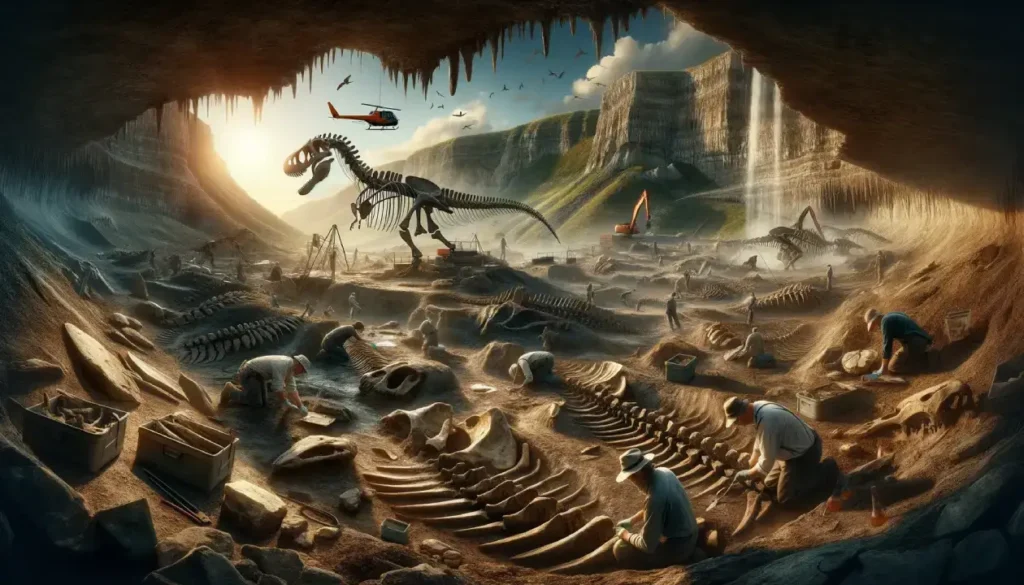
Famous Paleontological Dig Sites Around the World
Embarking on a global tour, let’s explore some of the most renowned dinosaur fossil dig sites. Each location is a treasure trove of prehistoric secrets, waiting to reveal stories from millions of years ago. These sites have provided invaluable contributions to dinosaur paleontology, offering a glimpse into a world long gone but never forgotten.
North America
1. Dinosaur Provincial Park, Alberta, Canada
A UNESCO World Heritage Site, Dinosaur Provincial Park is renowned for its remarkable fossil discoveries. Over 40 dinosaur species have been unearthed here, including some of the most complete skeletons known to science. The park’s rich fossil beds have yielded over 150 complete dinosaur skeletons, making it a haven for paleontologists and enthusiasts alike.
2. Morrison Formation, Colorado, USA
This vast sedimentary sequence stretches across several U.S. states, but Colorado’s portion is particularly famous. It’s a hotspot for Late Jurassic fossils, including iconic dinosaurs like Stegosaurus and Apatosaurus. The Morrison Formation is not only significant for its quantity of fossils but also for the diversity of life it represents, from massive sauropods to tiny mammals and amphibians.
3. Hell Creek Formation, Montana, USA
This site is a goldmine for understanding the late Cretaceous period. It’s best known for the discovery of Tyrannosaurus rex fossils. The Hell Creek Formation, with its well-preserved fossil layers, offers an extraordinary window into the ecosystems that existed just before the mass extinction event.
4. Badlands National Park, South Dakota, USA
The Badlands are a striking landscape of eroded buttes and pinnacles, where erosion has exposed ancient sediment layers. This geological wonder has revealed a vast array of fossils, including ancient mammals and reptiles, making it a critical site for understanding life in the Oligocene epoch.
South America
1. Ischigualasto Provincial Park, San Juan Province, Argentina
Also known as the Valley of the Moon, this park features some of the oldest known dinosaur remains. The site is crucial for understanding the Triassic period, offering evidence of early dinosaur evolution. It’s here that paleontologists have found fossils of early dinosaurs like Eoraptor and Herrerasaurus.
2. Patagonia, Argentina
Patagonia is a land of breathtaking landscapes and groundbreaking discoveries. Gigantic dinosaur species, such as Argentinosaurus and Giganotosaurus, have been unearthed in this region. The fossils found here have shed light on some of the largest creatures ever to walk the Earth.
3. Cruzeiro do Sul Formation, Brazil
Brazil’s contribution to paleontology is showcased in the Cruzeiro do Sul Formation. This site has produced a variety of fossils, including those of theropods and sauropods. It’s a testament to the diverse dinosaur fauna that once roamed South America.
Europe
1. Burgess Shale, British Columbia, Canada
Despite being in Canada, Burgess Shale is a European paleontological marvel, having connections with similar fossil sites in Europe. It’s famous for its exceptional preservation of Cambrian-era marine fossils. The variety and quality of fossils here, including some of the earliest complex life forms, provide invaluable insights into early animal evolution.
2. Solnhofen Plattenkalk, Bavaria, Germany
This site in Germany is renowned for its finely-grained limestone layers that have preserved a diverse array of fossils, including the famous Archaeopteryx, which bridges the gap between dinosaurs and birds. The Solnhofen Plattenkalk offers a rare glimpse into the Jurassic marine and terrestrial ecosystems.
3. Dinosaur Coast, Normandy, France
Normandy’s Dinosaur Coast is a treasure trove of Jurassic and Cretaceous period fossils. Its cliffs and beaches have revealed numerous dinosaur bones, footprints, and even fossilized plant life, providing a unique window into the prehistoric world that once existed in this region.
4. Isle of Wight, England
Dubbed the ‘Dinosaur Isle’, this location is one of Europe’s richest dinosaur fossil locales. It’s particularly known for its Cretaceous-era finds, including various dinosaur species such as the carnivorous Neovenator and herbivorous Iguanodon.
Africa
1. Karoo Basin, South Africa
The Karoo Basin is a goldmine for paleontologists, offering a continuous record of fossil deposits from the late Carboniferous to the early Jurassic periods. This site is particularly famous for its therapsid fossils, which provide clues about the evolution of mammals from reptilian ancestors.
2. Dinosaur Valley, Morocco
Morocco’s Dinosaur Valley is an expansive site known for its abundant and diverse dinosaur fossils, including the massive sauropod Atlasaurus. The variety of fossils found here contributes significantly to our understanding of the Mesozoic era in Africa.
3. Tendaguru Formation, Tanzania
The Tendaguru Formation is among the most significant dinosaur fossil sites in Africa. This late Jurassic formation has yielded some of the largest dinosaur specimens ever found, including the famous Brachiosaurus.
Asia
1. Erlian Basin, China
China’s Erlian Basin is a hotspot for Cretaceous dinosaur fossils. This region has produced a plethora of well-preserved fossils, including unique theropods and the first-known feathered dinosaurs, which have been pivotal in studying dinosaur evolution.
2. Gobi Desert, Mongolia
The Gobi Desert is one of the richest sources of dinosaur fossils in the world. It’s famous for its ‘dinosaur graveyards’, where numerous skeletons are often found together. This site has been crucial in providing insights into the behavior and ecology of dinosaurs.
3. Siwalik Hills, India
India’s Siwalik Hills are known for their extensive fossil records of the Miocene epoch. While primarily known for mammalian fossils, the site also offers valuable information about the region’s prehistoric environment and climate.
Each of these sites, spanning continents and time periods, enriches our understanding of the Earth’s prehistoric life. They are not only significant for the fossils they hold but also for the stories they tell about the ancient worlds they once were.
How to Visit a Paleontological Dig Site
Embarking on a journey to a paleontological dig site is like stepping into a real-life time machine. It’s a transformative experience that connects us with Earth’s ancient inhabitants. But before you pack your adventure gear, let’s explore how to find a dig site and what you should expect.
Finding a Dig Site to Visit
Research is key. Start by visiting informative websites like PrehistoricSaurus.com, where you can find a comprehensive guide on the geographic distribution of dinosaur fossils. Look for sites that offer guided tours, which are ideal for enthusiasts who aren’t professional paleontologists. Remember, not all dig sites are open to the public, so it’s important to verify accessibility and any required permissions.
What to Expect at Paleontological Dig Sites
Visiting paleontological dig sites is not your average day trip. It’s important to set the right expectations:
- Guided Exploration: Many dig sites that allow visitors offer guided tours. Here, you can expect to learn about the site’s history, the types of fossils found, and possibly witness ongoing excavation work.
- Hands-On Experience: Some sites may offer programs where you can get your hands dirty and help with the dig. This is a chance to experience the thrill of uncovering fossils firsthand.
- Educational Sessions: Expect to learn a lot. Paleontological digs are full of learning opportunities, from the science of fossils to the techniques used in excavations.
- Physical Demands: Be prepared for a bit of physical work, especially if you’re participating in a dig. Excavation requires careful, sometimes repetitive, motions and can be quite tiring.
- Weather Conditions: Dig sites are often at the mercy of the elements. Whether it’s the beating sun or windswept rain, ensure you’re ready for the local weather.
- Real-Time Science: You’ll witness science in action. This is a rare opportunity to see paleontologists at work, piecing together the history of our planet.
Tips for Visiting a Dig Site
Ready to dig into the past? Keep these tips in mind for a memorable and safe experience:
- Check Regulations: Always check the rules and regulations of the site. Some may have strict guidelines to protect the fossils and the site’s integrity.
- Dress Appropriately: Wear comfortable clothing suited to the climate and rugged footwear. You’ll likely be on your feet a lot, possibly in rough terrain.
- Pack Smart: Bring essentials like water, sunscreen, a hat, and if permitted, your camera. Leave no trace behind to preserve the site for future explorers.
- Stay Safe: Follow all safety instructions provided by guides or site managers. The thrill of discovery is no match for personal safety.
- Keep Learning: Visit the museum’s role in dinosaur paleontology to understand how fossils go from the ground to display.
- Be Respectful: Respect the site and its historical significance. Remember, these are remnants of a bygone era, worthy of our awe and respect.
Visiting paleontological dig sites can be a transformative experience, offering a tangible connection to the distant past. For those looking to delve deeper into the field, consider reading about the analysis of dinosaur bone structures. It’s a fascinating way to comprehend the enormity of these creatures and the world they inhabited. With these insights and tips, you’re now ready to explore these wonders of our natural world.






